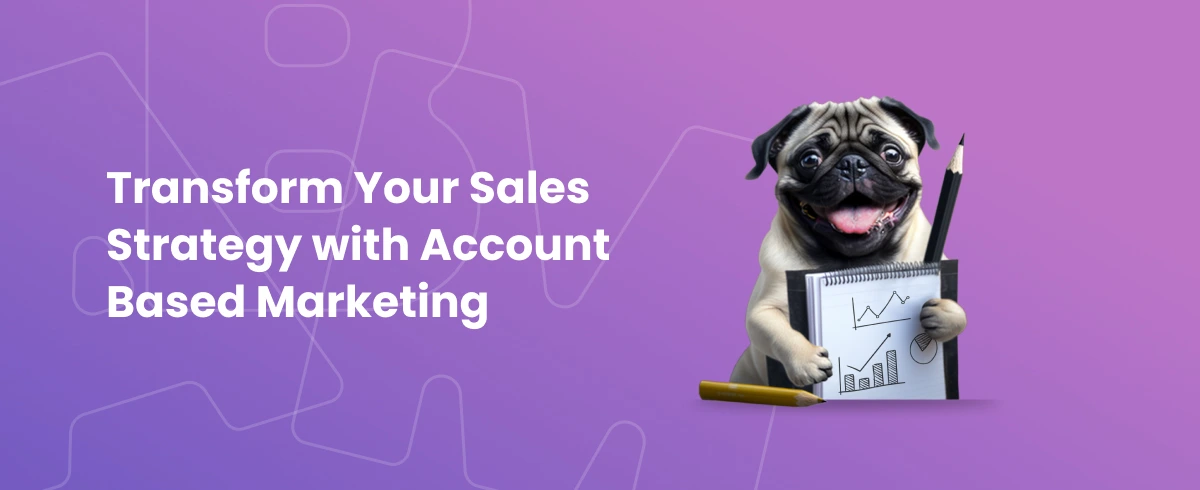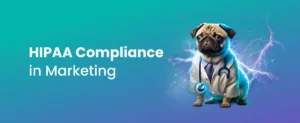Account Based Marketing (ABM) often gets presented as a complicated strategy that requires highly technical people to execute. But in reality, even smaller teams without full service account-based marketing agencies can get a lot more from a basic ABM program by applying personalisation to their campaigns.
Many marketers hear the word “personalisation” and assume this requires complex segmentation and a huge amount of work. However, the basics can be very simple to implement and still significantly impact your ABM results. This is where you can utilise target accounts to power your marketing strategy.
Account-Based Marketing With Simple Personalisation Tactics
One of the first things to do before even thinking about personalisation is to get crystal clear about your ABM strategy and the customer journey. Think about what you want to lead your prospects through. It’s like planning a road trip. It’s important not just to have the final destination in mind but to think about where you’ll be stopping along the way.
You can’t just take people straight from an ad to a contact sales page without intermediate steps. Thinking about the buyer journey for different people in those accounts helps you use personalisation as part of your ABM strategy.
Defining Your Ideal Customer In Account Based Marketing
It goes without saying that for any form of account based marketing, knowing your target customer is crucial. But, too often, marketers cast the net far too wide. Don’t forget to break your target customers into groups or ‘clusters’ based on factors such as their job roles or the industry they operate within.
By doing so, you can more effectively serve them content and messaging they’ll resonate with. To illustrate this point, let’s consider a software company selling a marketing automation solution. Do you think a CMO at a huge e-commerce brand needs to see the same messaging as the marketing manager of a Series A-funded tech startup? Almost certainly not. By defining our ideal customer and grouping them, we can greatly enhance the effectiveness of our ABM campaigns and apply better personalisation throughout our messaging.
Using Symmetric Messaging
From the very first touchpoint, we should focus on providing a seamless and congruent experience for users. As they go from awareness right down to consideration and, hopefully, purchase (or booking a call in most B2B scenarios), you can use direct mail in a way that nurtures them along. So let’s use a straightforward and common example to highlight this – paid advertising.
We’ll stick with the marketing automation platform mentioned previously as our example. Let’s assume they’ve decided to target two distinct segments – marketing directors for large multinational companies and heads of growth at early-stage tech companies. You’re likely familiar with the various targeting options available on platforms like Facebook or Google Ads. So if our automation platform wanted to personalise their ads (as they absolutely should), they could easily tailor their copy to each target customer group.
Imagine a marketing director scrolling through their Facebook feed, only to be presented with an advert from our marketing automation software with the headline “Struggling To Manage Teams Across Multiple Territories?”. I know that pain point would resonate very well with me. Compare that to the generic “Want To Save Time On Marketing?” tagline that many companies revert to. Which do you think would outperform the other?
From there, you can apply similar messaging on the landing pages they arrive at and any retargeting ads used further down the line. This same process applies to other channels, such as email marketing. You can even apply this process to the way sales development reps engage with leads over email or on calls.
Leveraging Technology To Help
Thankfully we have so many incredible tools available to marketers these days that solutions are available no matter how advanced you need to get. Here are some categories and specific solutions I use to power my agency and that of our clients:
Marketing Automation Platforms: Hubspot, Pardot.
Customer Relationship Management (CRM): Salesforce, Pipedrive.
Intent Data Tools: Bombora, G2 Buyer Intent.
Those are just some starting points, and, of course, every business will have varying requirements based on budget, team size and their goals for the program. You can also use marketing software such as HubSpot to help with running ABM campaigns.
The Right ABM Strategy Goes a Long Way
Account Based Marketing is a highly-effective strategy when executed properly but often gets overcomplicated, especially when marketers are introduced to new technologies they haven’t had exposure to before. Some planning up-front can work wonders. If you keep things simple, especially at the start, I’m sure you’ll see a far greater return on your investment for ABM. Don’t be afraid to start free with some tools to get a feel for what they offer too.
FAQ
Account Based Marketing (ABM) is a focused approach to B2B marketing where businesses target specific accounts with tailored campaigns. It is crucial for sales strategy because it allows companies to personalise their marketing efforts, leading to higher engagement and better conversion rates.
- Focuses on specific, high-value accounts.
- Personalised marketing messages.
- Improves conversion rates and ROI.
No, even smaller teams can successfully implement ABM by starting with basic personalisation tactics. The key is to be clear about your strategy and customer journey, which can be done with minimal resources.
- Suitable for small teams.
- Start with basic personalisation.
- Focus on a clear strategy and customer journey.
Identifying the right accounts involves understanding your ideal customer profile and segmenting them into groups based on factors such as job roles or industry. This allows you to tailor your messaging effectively to each group.
- Define your ideal customer profile.
- Segment based on job roles or industry.
- Tailor messaging to each group.
Personalisation is key in ABM as it helps create a seamless and relevant experience for the target accounts. By aligning your messaging with the specific needs and pain points of each account, you increase the likelihood of engagement and conversion.
- Creates a relevant experience for each account.
- Aligns messaging with specific needs and pain points.
- Increases engagement and conversion rates.
There are various tools available to support ABM efforts, such as marketing automation platforms (e.g., HubSpot, Pardot), CRM systems (e.g., Salesforce, Pipedrive), and intent data tools (e.g., Bombora, G2 Buyer Intent). These tools help streamline and optimise your ABM campaigns.
- Marketing automation platforms: HubSpot, Pardot.
- CRM systems: Salesforce, Pipedrive.
- Intent data tools: Bombora, G2 Buyer Intent.



















